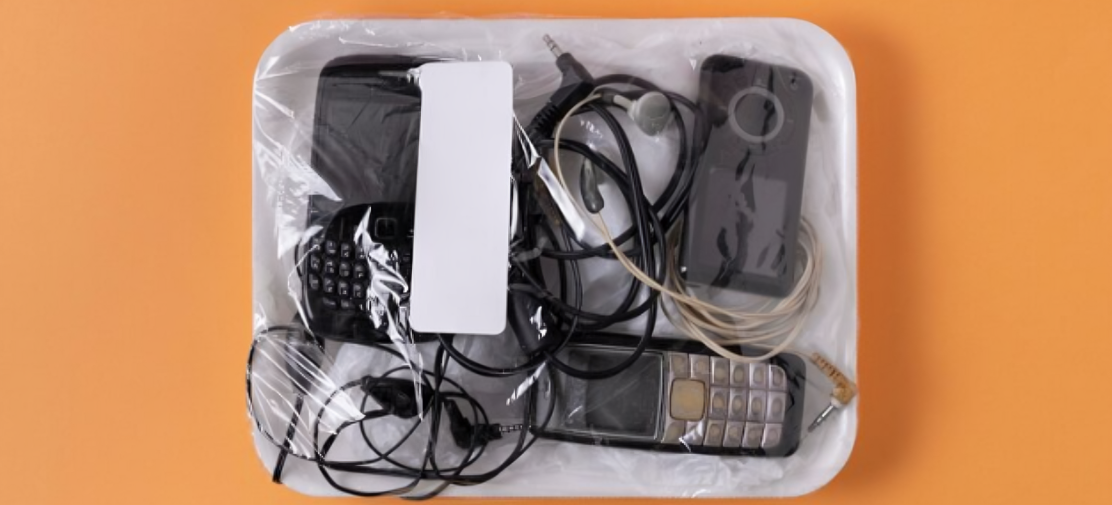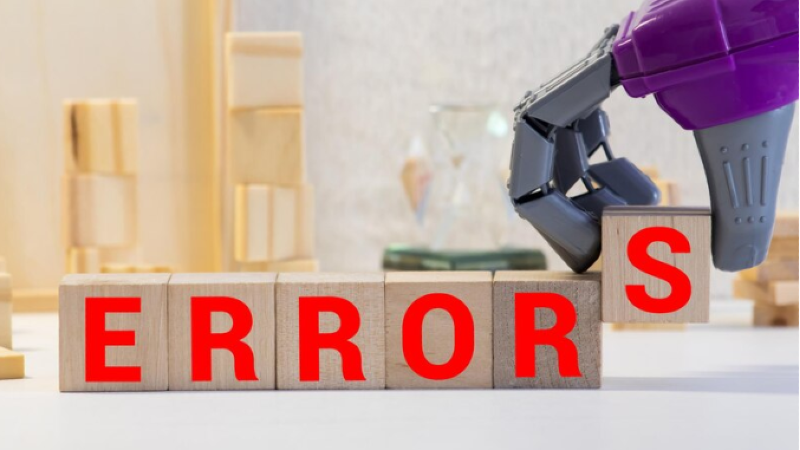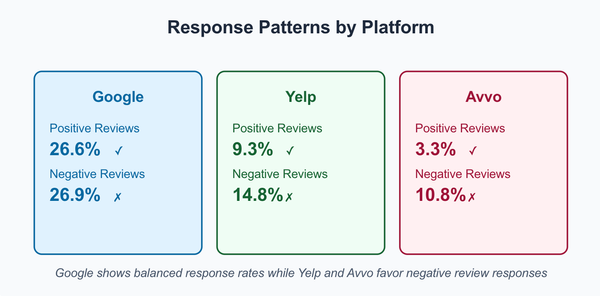The Rising Cost of Product Liability Claims: A Data Analysis

Do you know thousands of people get injured by defective or hazardous products? In fact, the number may surprise you. In 2023 alone, 12.7 million people were treated in emergency departments for injuries caused by consumer products, reflecting a steady increase from 2020.
This put a significant financial strain on manufacturers, retailers, and distributors in addressing product defects and regulatory compliance issues. The financial impact of product liability claims extends far beyond injury treatments and affects businesses with costly legal battles, recall expenses, and reputational damage.
Let's take a closer look at the escalating costs of product liability claims and the legal actions to seek justice and compensation.
What Is a Product Liability Claim?
Product liability makes manufacturers, distributors, and retailers legally responsible for injuries or damages caused by defective or unsafe products. This includes issues like design flaws, manufacturing defects, or insufficient warnings, for which those involved in its creation and distribution can be held liable. The plaintiff has to prove:
- The product was defective in some way.
- They used the product as intended.
- The defect caused them harm.
- They are entitled to compensation for their damages.
Grounds for Filing a Product Liability Lawsuit
Product liability lawsuits are filed when a defective or dangerous product causes harm. In the U.S., you can file a product liability lawsuit based on one or more of the following grounds:
- Design Defects: It happens when a product’s design is inherently unsafe, like faulty electrical systems, sharp edges on tools, or inadequate safety features in vehicles. In such cases, you may have valid grounds to file a lawsuit.
- Manufacturing Defects: If a product was altered or damaged during manufacturing, such as a batch of tires improperly inflated during production or a drug contaminated due to manufacturing errors, you may have valid grounds to file a product liability case.
- Failure to Warn: If a product is hazardous and lacks proper warnings, such as toys with small parts without choking hazard alerts, the manufacturer may be held responsible. You may have valid grounds to file a product liability lawsuit in such situations.
- Negligence: If a manufacturer or another party in the supply chain acts carelessly, such as improperly handling materials or failing to conduct safety tests, they may be held liable. In such cases, you can file a product liability lawsuit.
- Strict Liability: In strict liability cases, a manufacturer or seller can be held responsible for injuries caused by a defective product, even without proof of negligence.
- Breach of Warranty: If a manufacturer or seller makes promises about a product’s safety or performance and fails to meet those expectations, it can lead to harm. In such cases, you may have grounds for a breach of warranty claim.
If you believe you suffered a loss under any of the above circumstances, you can simply file a product liability claim to get the compensation you deserve. Get in touch with an experienced personal injury or product liability lawyer now to help you navigate the legal process!
What You Can Recover from a Product Liability Lawsuit?

You can potentially recover several types of damages based on your case’s facts and circumstances when pursuing a product liability lawsuit. Understanding what you can recover from the damages is essential when filing a product liability claim.
- Medical Expenses: You can get compensation for medical bills, including hospital stays, surgeries, physical therapy, medications, and future treatments.
- Lost Wages: You can recover the wages you lost during your recovery if your injury caused you to miss work. You may also be able to get compensation for future lost earnings if the injury impacts your ability to work for a long time.
- Pain and Suffering: You are liable to receive compensation for the physical pain and emotional distress you experienced because of the injury.
- Emotional Distress: You could get compensation for the impact on your mental well-being if your injury led to anxiety or depression.
- Punitive Damages: If the defendant acted recklessly or intentionally, you might receive extra compensation to punish them and discourage similar behavior.
- Property Damage: If the defective product damages your property, you could recover the cost to repair or replace it.
Key Statistics and Trends in Product Liability Payouts
Product liability claims associated with payouts have significantly increased over the years. The following key statistics and trends offer insight into how these claims are impacting businesses:
Global Product Liability Insurance Market Size and Growth
The global product liability insurance market is projected to grow to one trillion U.S. dollars between 2023 and 2028, eventually reaching 10 trillion U.S. dollars.
Toy-Related Fatalities and Injuries
In 2022, toy-related injuries and fatalities continued to pose risks to children, with tragic consequences from choking and accidents. Despite a decline in injury rates over the years, a significant number of children were affected.
Toy-Related Fatalities (2022)
- 11 reported fatalities among children aged 14 or younger.
- Causes included choking on toys, a motor vehicle collision with a scooter, and various other toy types.
- Age range of deceased children: 7 months to 10 years.
Toy-Related Injuries (2022)
- 209,500 estimated injuries treated in U.S. emergency departments.
- 54% of injuries were to males.
- 76% of injuries involved children 14 or younger, with 69% of those under 12 and 38% under 4 years old.
- 41% of injuries were lacerations or contusions.
- 47% of injuries were to the head and face.
- 94% of injured children were treated and released.
Injury Trends (2015-2022)
- Significant decrease in toy-related injuries for children aged 14 and 12 from 2015 to 2022.
Net Premiums for Product Liability Insurance in the U.S. (2006-2022)
U.S. product liability insurance premiums totaled around 4.3 billion dollars in 2022. However, In 2022, Texas' product liability insurance market earned direct premiums totaling 356.87 million U.S. dollars, down from 370.66 million U.S. dollars in the previous year.
Trends in Product Liability Insurance Costs by Year
Product liability insurance is essential for businesses to protect against claims arising from defective products. Over the years, the cost of this insurance has experienced notable fluctuations, influenced by various factors such as claim frequency, legal trends, and economic conditions. Understanding these trends is crucial for businesses to effectively manage risks and anticipate future expenses.
Average Settlement for a Product Liability Case
The U.S. Govt. holds manufacturers, distributors, or sellers responsible for injuries caused by defective products. The settlement amounts in these cases can vary widely based on factors such as the severity of the injury, the nature of the defect, and the jurisdiction.
According to a study, the median settlement for product liability cases in 2020 was $3,908,111, with an average of $7,058,106. It's important to note that these figures represent the median and average settlements, and actual amounts can differ significantly based on the specifics of each case.
Laws Protecting Product Liability Claims in the USA
In the United States, each state has its own set of laws to protect individuals injured by defective or unsafe products. These laws provide consumers with legal options to seek compensation from the manufacturers, distributors, or retailers responsible for the harm caused. Below are key laws that protect product liability claims for those harmed by defective products:
The Consumer Product Safety Act (CPSA)
The CPSA sets safety standards for consumer products and gives the Consumer Product Safety Commission (CPSC) the authority to enforce these standards. The law allows the CPSC to recall dangerous products and ban those that pose an unreasonable risk of injury to the public, offering protection to injured consumers.
State-Specific Product Liability Laws
Each state has its own product liability laws. These may vary and allow consumers to hold manufacturers or sellers accountable. These laws often allow victims to file claims based on negligence, strict liability, or breach of warranty for injuries caused by defective products.
The Federal Food, Drug, and Cosmetic Act (FDCA)
The FDCA regulates the safety of food, drugs, medical devices, and cosmetics. The products must be proven safe before being sold to the public. If a defective medical product causes harm, victims can file product liability claims under this law, with the U.S. Food and Drug Administration (FDA) overseeing enforcement.
The Magnuson-Moss Warranty Act
The Magnuson-Moss Act requires manufacturers to provide clear and enforceable product warranties. If a product fails to meet the terms of the warranty, consumers have the right to seek legal recourse. This law applies to both consumer goods and certain services, ensuring protection when products are defectively marketed.
The Uniform Commercial Code (UCC)
Under the UCC, products sold with an implied warranty of merchantability or fitness must meet certain quality standards. If a product is defective and causes harm, the UCC allows consumers to file product liability claims for compensation.
The Legal Process for Filing a Product Liability Claim

Filing a product liability claim is a complicated process. Therefore, here are the key steps you should follow to navigate the legal process effectively.
Step 1: Consult a Product Liability LawyerConsult an experienced product liability lawyer who can evaluate your case, determine the responsible parties, and assist you throughout the legal process.
Step 2: Gather EvidenceNext, your attorney will collect evidence of the defect, injury, and damages through medical records, photos of the injury or product, product receipts, witness statements, and expert opinions.
Step 3: Determine the Type of Claim
Your lawyer will assess your case and determine whether your product liability claim falls under design defects, manufacturing defects, or failure to warn, using the gathered evidence.
Step 4: Filing the Complaint
After gathering the necessary evidence, your lawyer will draft and file a formal complaint with the court outlining the defect, the injury, and the damages while naming the parties responsible for the incident.
Step 5: Discovery Phase:
Once the complaint is filed, both parties will exchange relevant information, including depositions, interrogatories, and document requests.
Step 6: Negotiation and Settlement
In many cases, the parties will attempt to resolve the matter outside court through negotiations or mediation. If both sides reach an agreement, the case can be settled without going to trial. Your lawyer will ensure that any settlement is fair and accurately reflects the full extent of your damages.
Step 7: Trial
The case will move to trial if a settlement cannot be reached. During the trial, both parties will present their evidence and arguments. A judge or jury will evaluate the information and decide the case's outcome.
Step 8: Appeal (if applicable)
If the verdict is unfavorable, you may have the option to appeal to a higher court. However, the appeals process can be time-consuming and complicated, so it's essential to consult with your lawyer before pursuing this route.
Strategies to Maximize Compensation in Product Liability Cases

When injured by a defective product, you're not only dealing with physical pain but also the weight of medical expenses lost wages, and emotional distress. On top of that, managing the complexities of a legal case can add significant stress as you work to secure the compensation you truly deserve. Let’s explore some strategies to help maximize the compensation in your product liability case.
Document Everything Carefully
One of the first and most important steps in any product liability case is to document your injury thoroughly. Keep a detailed record of your medical treatments, doctor visits, and prescriptions to provide visual proof of the damage done. You should also document any other expenses related to the injury, such as travel for medical appointments, modifications to your home, and lost wages. These records will serve as evidence when calculating the full scope of your damages.
Understand the Full Impact of Your Injuries
The impact of your injury may go beyond immediate medical expenses, potentially leading to long-term disability. It's important to consider how your life has been affected beyond physical pain—such as emotional distress, mental anguish, and changes to your daily activities. A comprehensive evaluation of these effects will help your lawyer secure a compensation package reflecting the full scope of your suffering.
Don’t Overlook Long-Term Care and Treatment Needs
If your injury needs long-term care, rehab, or ongoing treatment, include these costs in your claim. Also, consider any care you may need later, like physical therapy, mental health support, or surgeries. You can avoid paying for treatment on your own by adding these expenses to your claim.
Consult a Skilled Attorney
Product liability cases involve legal complexities that are difficult to navigate without professional help. Consult an experienced and reputed attorney who is well-versed in identifying the responsible parties, evaluating the strength of your case, and negotiating effectively with insurance companies and defendants.
Can't find the right attorney to file a product liability case? Use this comprehensive Lawyers Map to see how many legal professionals are in your area, their practice areas, and how many reviews they have. Stay informed and make the right decision.
Prepare for Negotiation and Trial
Many product liability cases are settled out of court. However, keep yourself prepared for the possibility of going to trial. Insurance companies and defendants offer a reasonable settlement when they believe you’re ready to pursue a court case. It gives you a negotiating edge when dealing with insurers.
Know the Statute of Limitations
Each state has its laws, known as the statute of limitations. It determines how long you have to file a product liability claim. Filing a claim after the statute of limitations can result in the dismissal of your case, regardless of its merit. Make sure that all necessary paperwork is filed on time.
Stay Consistent with Medical Treatment
Stay consistent with your medical treatments, even if you feel your condition is improving. Failing to follow through with prescribed treatments can undermine your claim. It may be used as evidence that your injury wasn’t as severe as you claim. Following your doctor’s instructions and documenting each visit will show the insurance company or court you’re serious about your recovery.
Evaluate Non-Economic Damages
Non-economic damages can be challenging to quantify but are crucial to your claim. Communicate how your injury has impacted your life to the attorney and the overall toll the injury has taken on your mental well-being.
Common Mistakes to Avoid in Product Liability Claims

Product liability claims often involve intricate legal and technical details to navigate the process. When dealing with a product liability case, you may make several mistakes and negatively impact the outcome of your claim. Consider the following mistakes and increase your chances of receiving fair compensation.
- Not Identifying the Responsible Party: Product liability cases involve several parties, including manufacturers, suppliers, or retailers. Failing to identify the responsible party correctly complicates the case and causes delays. So, determine who is liable for the defect first to streamline your claim process.
- Accepting the First Settlement Offer: Insurers offer an initial settlement to close the case quickly. However, these are typically relatively low and may not cover all the damages or future expenses related to the injury. Never accept a settlement offer without consulting with an experienced product liability attorney to ensure you’re being compensated fairly.
- Failing to Keep Track of All Associated Costs: Product-related injuries can result in significant expenses, including medical bills, lost wages, and emotional distress. Not keeping a detailed record of all these costs could lead to less compensation. Document all medical treatments, travel expenses, lost income, and any other financial impact related to the injury.
- Oversharing on Social Media Platforms: Posting details about your injury or the lawsuit on platforms like Facebook, Instagram, or Twitter may inadvertently harm your case. Insurance companies and defense attorneys often monitor social media for anything that could undermine your claim. It's crucial to avoid sharing anything related to the lawsuit while it's ongoing to protect your case.
- Ignoring the Statute of Limitations: Each state has its own statute of limitations, which sets a deadline for filing a lawsuit. It’s crucial to ensure that you file your claim before the deadline passes. Missing this deadline can prevent you from pursuing legal action altogether.
- Failing to Document the Injuries: Failing to document your injuries through medical records, photos, and any related expenses can make it harder to prove the extent of harm caused by the product. Always seek medical attention immediately after an injury and document everything to support your claim.
- Attempting to Fix the Defective Product: Don’t try to repair or fix the defective product. Doing so can destroy evidence of the defect and weaken your case. Keep the product in the defective state to provide solid evidence for your claim.
Hire the Best Product Liability Lawyer Now!
The rising cost of product liability claims is an undeniable challenge for businesses. Companies can mitigate these costs and protect themselves from future risks by using the right strategies - investing in quality control and implementing strong legal and compliance practices. Being prepared can make all the difference in protecting a company’s bottom line and reputation. Also, seek the guidance of a reputed product liability lawyer to navigate complex legal landscapes, ensure proper defenses, and advocate for the company’s best interests in the event of a claim.
Are you facing challenges with product liability claims? Sign up for Lawyersrating. FYI, connect with the top-rated product liability lawyers in the USA.





